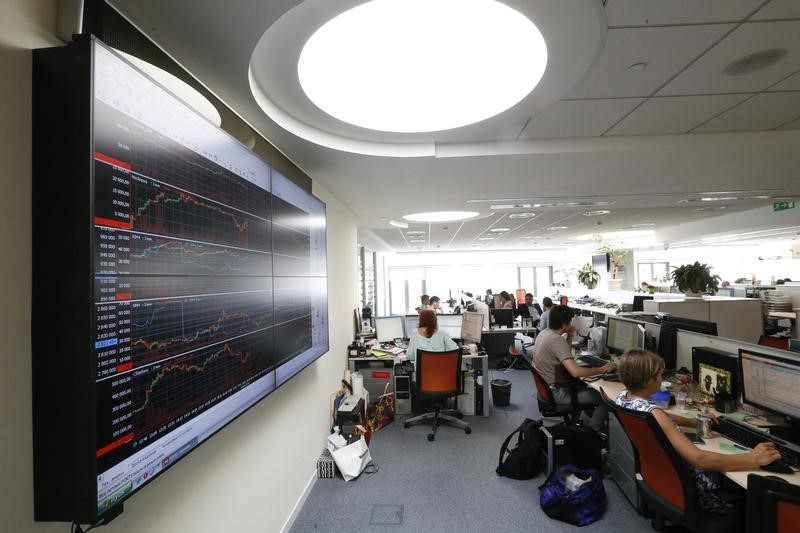By Lucia Mutikani
WASHINGTON (Reuters) - U.S. employment increased solidly in March, underscoring the economy's resilience, but an influx of Americans into the labor market could temper nascent wage growth and keep the Federal Reserve cautious about raising interest rates.
Nonfarm payrolls increased 215,000 last month and the unemployment rate rose to 5.0 percent from an eight-year low of 4.9 percent, the Labor Department said on Friday. The jobless rate edged up as more people continued to enter or re-enter the labor market, a sign of confidence in the jobs market.
Average hourly earnings gained seven cents after slipping in February. The labor market has largely shrugged off slowing global economic growth, a robust U.S. dollar that has hurt manufacturing exports, and the negative impact of cheap oil prices on the energy sector.
Economists see limited impact on monetary policy in the near-term from the strong jobs report, as the growing number of labor market entrants supported Fed Chair Janet Yellen's view that there was still hidden slack in the jobs market.
"The rise in participation is creating breathing room, allowing the Fed to react very slowly to a strong labor market," said Ethan Harris, global economist at Bank of America Merrill Lynch (NYSE:BAC) in New York.
The Fed also appears to be more focused on international developments. Yellen said this week that slowing world growth and lower oil prices posed a downside risk to the U.S. economic outlook, adding that she considered it appropriate for policymakers to "proceed cautiously in adjusting policy."
Fed officials last month downgraded their economic growth expectations and forecast only two more rate hikes this year. The U.S. central bank raised its benchmark overnight interest rate in December for the first time in nearly a decade.
Financial markets see a 30 percent chance of a hike at the Fed's June policy meeting, a 50 percent chance of such a move in September and a 64 percent probability at the December meeting, according to CME FedWatch.
Economists polled by Reuters had forecast nonfarm payrolls increasing 205,000 in March and the unemployment rate holding steady at 4.9 percent. The economy created 1,000 fewer jobs in January and February than previously reported.
U.S. Treasury prices fell after the data, while the dollar (DXY) rose against a basket of currencies. U.S. stocks were trading higher.
The jobs report came on the heels of recent data showing sluggish consumer spending and weak business investment on capital in the first two months of the year, as well as deterioration in the international trade balance.
Those reports prompted economists to slash their first-quarter GDP growth estimates to as low as a 0.9 percent annualized pace from as high as a 2.0 percent rate. The economy grew at a 1.4 percent rate in the fourth quarter.
Other data on Friday showed manufacturing activity expanded in March for the first time in six months as new orders surged, suggesting the worst of the factory rout was over. The Institute for Supply Management said its index of national factory activity rose 2.3 points to a reading of 51.8 in March.
WAGES BOUNCE BACK
Though employment gains have slowed after averaging 282,000 jobs per month in the fourth quarter, there is little labor market strain from the global slowdown, which helped to ignite a massive stock market sell-off at the start of the year.
Wages increased last month, with average hourly earnings rising 0.3 percent. That lifted the year-on-year earnings gain to 2.3 percent from 2.2 percent in February, a welcome development after the recent wobble in consumer sentiment.
Economists say wage growth of between 3.0 percent and 3.5 percent is needed to lift inflation to the Fed's 2.0 percent target. Though the Fed's preferred inflation measure is currently at 1.7 percent, Yellen has expressed skepticism over the sustainability of gains, citing transitory factors.
The labor force participation rate, or the share of working-age Americans who are employed or at least looking for a job, rose a tenth of a percentage point to 63 percent in March, the highest level since March 2014.
It has increased 0.6 percentage point since dipping to 62.4 percent in September. About 2.4 million people entered or re-entered the job market since September, the second-largest increase in the labor force over a six-month period on record.
"This sharp rise in the labor force can only mean formerly frustrated people are coming back to the labor market as their jobs prospects have improved," said Harm Bandholz, chief U.S. economist at UniCredit Research in New York.
But a broad measure of unemployment that includes people who want to work but have given up searching and those working part-time because they cannot find full-time employment rose to 9.8 percent last month from a more than 7-1/2-year low of 9.7 percent.
Employment gains in March were broad-based. Manufacturing, however, lost 29,000 jobs, the largest number since December 2009, despite signs of stabilization in the factory sector.
Mining purged 12,000 more jobs last month. Mining payrolls have declined by 185,000 jobs since peaking in September 2014, with three-fourths of the losses in support activities.
Oilfield services providers Schlumberger (N:SLB) and Halliburton Co (N:HAL) have announced thousands of job cuts as they try to cope with reduced profits from a prolonged slump in oil prices.

Construction payrolls rose 37,000, increasing for a ninth straight month. Retail employment surged 47,700 after rising strongly in January and February despite weak sales. Government payrolls increased 20,000 last month.